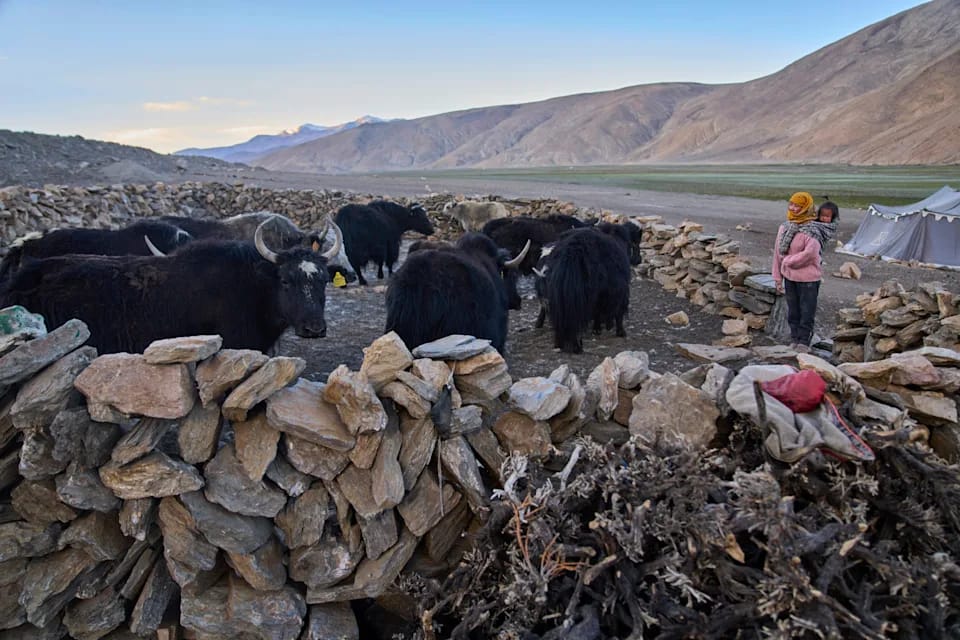
Ladakh, India (AP) — In the remote and rugged Himalayan region of Ladakh, life is growing increasingly difficult for traditional yak herders. As the sun begins to set, Tsering Dolma leads a dozen yaks into a stone enclosure with her one-year-old child strapped to her back, a routine that reflects the centuries-old lifestyle of her community. But now, climate change is reshaping that way of life.
Once dependent on predictable snowmelt to sustain lush high-altitude grazing lands, herders are now witnessing drastic environmental shifts. “It used to snow and rain regularly. Now that’s changed — even winters are warmer,” says 32-year-old Dolma, echoing concerns shared by many in her region.
The women of Ladakh carry much of the burden of herding life. In a nearby valley, 73-year-old Kunzias Dolma, unrelated to Tsering, stirs yak milk tea and checks on her homemade yak butter, all while spinning a Buddhist prayer wheel in her hand. She’s spent her entire life milking yaks, spinning wool, and sewing blankets — labor-intensive tasks passed down through generations.
“Our day begins at 5 a.m.,” she explains. “We milk the yaks, process milk, tend to them all day until lunch, and return to work again in the evening. It’s been this way for years.”
But climate change is now threatening the very foundation of this traditional existence. The warming climate has led to irregular snowfall and rainfall, shrinking pastures, and placing physical stress on yaks, cold-adapted animals related to cattle and bison. Research indicates that average temperatures in Ladakh have risen by 3°C (5.4°F) over the past four decades, bringing more extreme heat waves and unpredictable rainfall patterns.
These environmental shifts are already having a measurable impact. According to government figures, Ladakh’s yak population has dropped from nearly 34,000 in 2012 to under 20,000 by 2019, the most recent data available. While yaks still number in the millions globally, scientists warn that ecosystems in the upper Himalayas are among the most vulnerable to the effects of global warming.
The way of life for Ladakh’s yak herders is now at a crossroads. Younger generations are increasingly seeking employment outside of traditional pastoralism, while the older generations struggle to adapt to a changing climate and dwindling resources.
Herder Kunzang Angmo, like many others, has witnessed the changes first-hand. The question now facing communities like hers: Can their ancient traditions endure the mounting pressures of a warming world?
